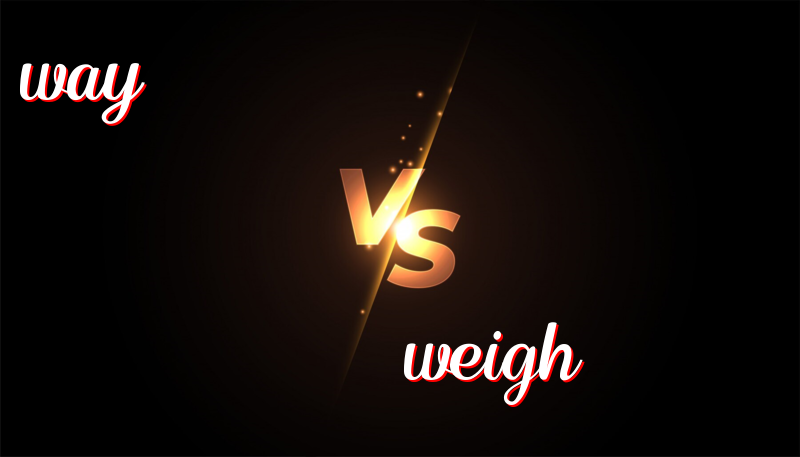Way vs Weigh: The Path to Heaviness!
Way vs Weigh: Telling Them Apart
Some English words sound the same but have different meanings. “Way” and “weigh” are two such words. They are called homophones. Let’s look at what each word means, where they come from, how to use them, and tricks to remember them.
The History of “Way” and “Weigh”
The word “way” comes from Old English “weg,” which means a path or direction. It has been used for a very long time to talk about roads and how to do things.
On the other hand, “weigh” comes from Old English “wegan,” which means to measure the heaviness of something. It was used to talk about how heavy something is or to lift something.
How to Use “Way” and “Weigh”
Using “Way”
The word “way” is often about paths or methods. Here’s how you can use it:
- We walked the long way home.
- Please show me the way to the park.
- There’s a better way to solve this problem.
- She is on her way to becoming a doctor.
- Can you find your way back to the hotel?
Using “Weigh”
The word “weigh” is about measuring heaviness. Here are some examples:
- The apples weigh two pounds.
- I need to weigh the flour for the cake.
- How much do you weigh?
- The farmer will weigh the vegetables.
- He will weigh the pros and cons before deciding.
Trick to Remember the Difference
Think of “way” as a path or method. If you’re talking about a direction or how to do something, use “way.” For “weigh,” think about scales and heaviness, like measuring how heavy something is.
Summary
“Way” is used to talk about paths and methods, while “weigh” is about measuring heaviness. Remember the sound might be the same, but the meaning is different. Use “way” for directions and “weigh” for heaviness.

Leave a Reply
You must be logged in to post a comment.